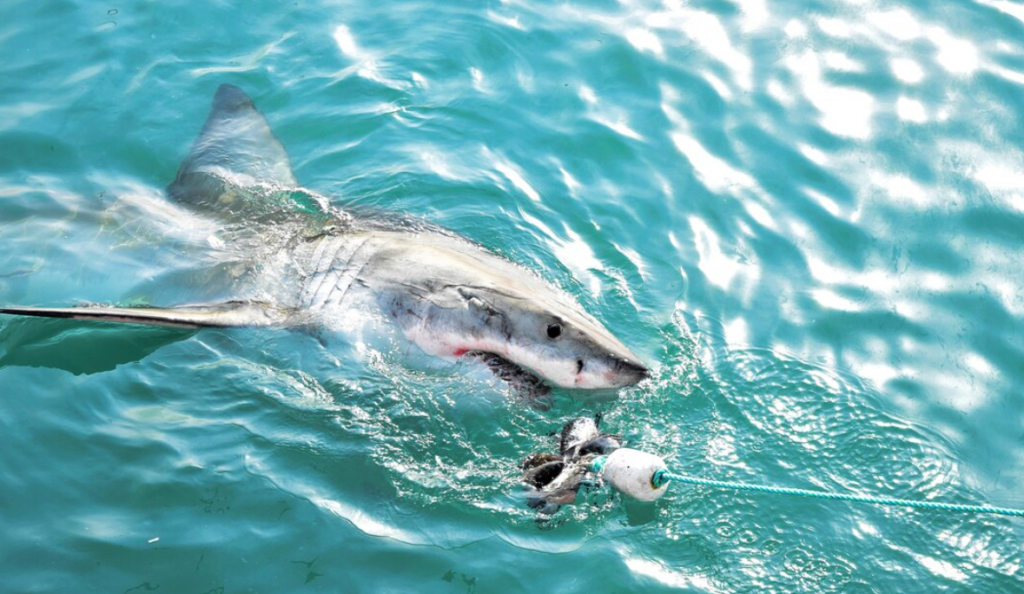The ocean’s depths have always been a realm of mystery and fascination, home to some of Earth’s most enigmatic and powerful creatures: sharks. While these apex predators have been a subject of wonder and awe for centuries, they have also remained elusive in many ways, leaving scientists with many unanswered questions about their behavior, migrations, and interactions. However, with the advent of advanced technology, researchers have gained valuable tools, one of which is the shark tag tracker. This article delves into the fascinating world of shark tracking devices, shedding light on how they work, their diverse applications, and the invaluable insights they provide.
What Is Shark Tagging?
Many often wonder, how do they tag sharks?
- Shark tagging is a scientific method used by marine biologists and researchers to study and monitor the movements, behavior, and habitat utilization of sharks;
- The process involves attaching a small electronic device, known as a tag, to the shark’s dorsal fin or body;
- These tags can vary in complexity from simple identification markers to sophisticated electronic devices that transmit data about the shark’s location, depth, temperature, and other environmental factors.
For those inquiring about how are sharks tagged, the answer lies in the innovative methods employed by marine researchers.
- Once tagged, the shark’s movements can be tracked over time, either by satellite, acoustic receivers, or through direct observation;
- Shark tagging not only provides invaluable insights into the mysterious lives of these apex predators but also aids in conservation efforts by understanding their migratory patterns, breeding grounds, and interactions with their environment;
- The data gathered can be crucial for developing effective conservation strategies and marine protected areas to ensure the survival and health of shark populations.
Marine Electronic Tags
There are two primary types of electronic tags used in research: transmitters and dataloggers. Transmitters send information from the animal to a distant receiver using sound or radio frequencies. On the other hand, dataloggers store information within their built-in memory, necessitating their retrieval from the animal to access the data. One notable difference is that dataloggers usually capture a broader dataset than transmitters. But, the uncertainty of getting dataloggers back is a drawback, highlighting the advantage of transmitters’ remote data sharing. Some tags merge the features of both dataloggers and transmitters. For example, Pop-Up Archival Satellite Tags (PATs) save extensive information internally while also simplifying the data for efficient satellite communication. If one manages to recover PATs, all the stored information can be extracted.
Many electronic tags are equipped with sensors to capture environmental metrics. Commonly used sensors detect depth (via pressure), ambient temperature, salinity levels (through conductivity), and ambient light. Such data provides scientists with insights into the animals’ preferred environments. For example, data on depth and temperature can suggest whether a shark mostly stays in the warmer surface waters or explores the colder depths. The electronic tag field is witnessing the development of innovative sensors, like those detecting pH levels, offering insights into vital behaviors of sharks and fishes, such as their eating habits.
Types Of Shark Tags

Acoustic Pingers
The simplest version of an acoustic transmitter is termed the ‘pinger.’ This ‘pinger’ sends out ultrasonic waves that can be picked up by a hydrophone (a specialized underwater microphone) and a corresponding receiver. This technique was the pioneering approach to fish location tracking. Such beepers are attached to sharks and fish, enabling scientists to trace their paths from a boat equipped with the necessary hydrophone and receiver. This method of monitoring is called ‘active tracking’ as it demands the real-time pursuit of the fish to pinpoint its movements. Contemporary models of these tags are equipped with internal sensors, often gauging pressure and temperature, which offer insights into the fish’s depth and surrounding water temperature. This specific information is integrated into the ultrasonic waves the tag produces.
Passive Acoustic Monitoring
Passive acoustic observation employs the core transmitter-receiver concept of active tracking but is tailored for longer-term research, often lasting several months or years. This technique uses specific ultrasonic transmitters, which are surgically placed inside sharks and fish for prolonged monitoring. These transmitters then send signals that are captured by underwater detection devices set at strategic locations on the ocean floor. Anchored to underwater anchors, these detectors continuously scan for transmitter signals all day and night, throughout the year. When a shark with a transmitter comes within the detection zone of a device (with a range that can extend up to 1 km based on the transmitter model), its distinct ID code, along with the exact date and time, gets recorded. Data from multiple detection devices are then combined to create a detailed map of shark migratory behaviors.
Satellite Transmitters – SPOT Tags
Satellite transmitters are capable of remote data transmission over vast geographic regions through interactions with satellite arrays. These transmitters operate through radio signals, necessitating direct contact with the air for data transmission, hence requiring external attachment. The external attachment method can render satellite tags vulnerable to damage and premature detachment. In the context of studying shark movements, Smart Position or Temperature Transmitting Tags (SPOT tags) are frequently affixed to the dorsal fin. SPOT tags emit signals to the Argos satellite network whenever the dorsal fin breaches the water’s surface. As a result, these transmissions yield geo-location approximations with an accuracy ranging from several hundred meters to a general global position.”
Business Card Tag
The Business Card Tag (BCT) is a pioneering datalogging tag created by Vemco Ltd. This innovative device integrates both an acoustic receiver and transmitter into a single unit, enabling BCTs to exchange identification codes. This capability introduces a valuable tool for quantifying interactions among marine animals, offering insights into the frequency and timing of their encounters. Beyond their communication with one another, BCTs can also identify other Vemco transmitters and can, in turn, be detected by other Vemco receivers.
Accelerometer Dataloggers
Three-dimensional accelerometer dataloggers capture gravitational shifts across three dimensions, providing an in-depth, 3D perspective of creature activities. These gadgets play a pivotal role in broadening our knowledge about animal actions. In partnership with our associates at the Ocean Exploration Institute in Tokyo, we’ve tapped into these resources to delve deeper into shark movement trends. The showcased kit encompasses both an accelerometer and a digital cam, granting an unparalleled ‘shark-view’ angle of its surroundings. This feature enables the juxtaposition of the shark’s movement dynamics with the visual scenes it witnesses during its ocean journeys.

pH Datalogger/Transmitter
pH tags represent a valuable innovation for assessing shark feeding behaviors. These devices are inserted into the shark’s stomach to monitor fluctuations in acidity over time. Typically, the shark’s stomach maintains a highly acidic environment, but the pH experiences significant shifts when the shark consumes food. This creates a reliable pH signal, indicating instances of shark feeding. While we have made significant progress in tracking shark movements over the years, there has remained a gap in our understanding of when and where they feed. pH tags offer a solution to this knowledge gap.
Hydrophone Tags
Devices like the Bioacoustic Probe serve as underwater sound recorders, akin to underwater tape recorders. The ocean is a dynamic soundscape, offering valuable insights into an animal’s surroundings and behavior. Hydrophone tags enable us to discern the sounds that animals hear and the noises they generate. These tags are instrumental in studying critical behaviors, such as feeding and mating, through acoustic observations.
Conclusion
Shark tracking devices have opened up a world of possibilities for marine scientists, allowing them to gain unprecedented insights into the lives of these enigmatic creatures. With technology continuously advancing, our understanding of sharks and their role in marine ecosystems is bound to grow even deeper. These tracking devices are invaluable tools in conserving and protecting these magnificent apex predators, as well as the delicate balance of our oceans.













+ There are no comments
Add yours